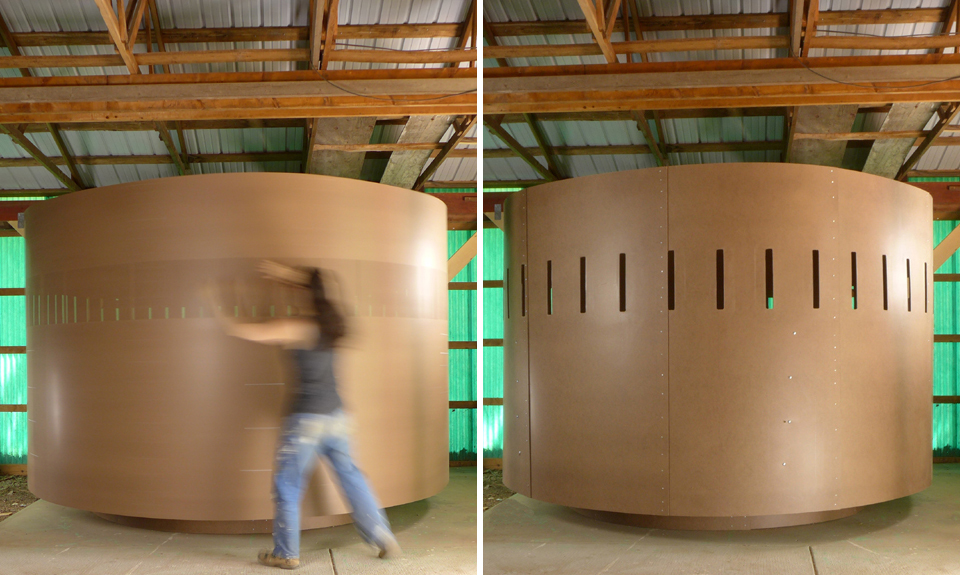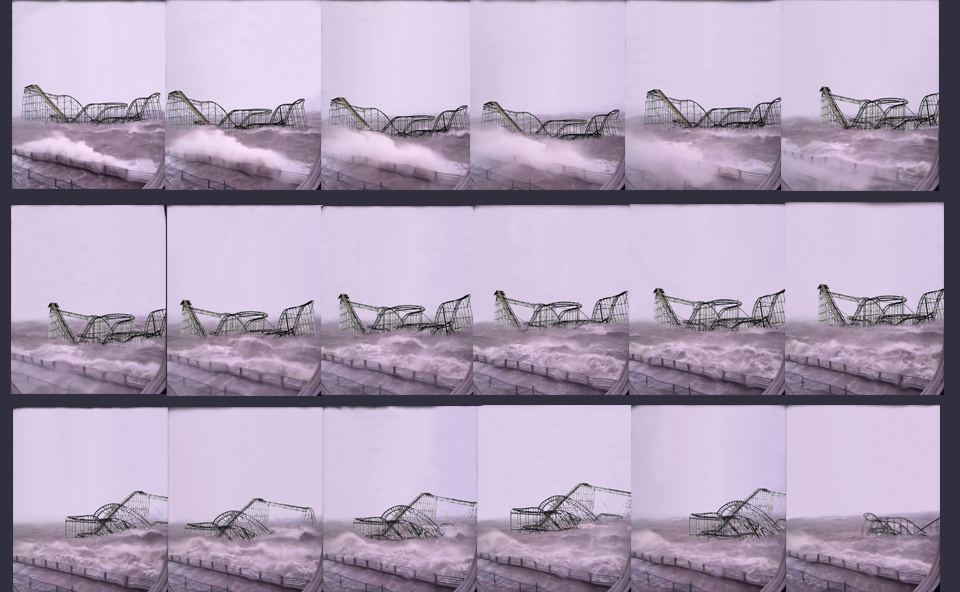History Repeats Itself, 138” x 92” cylinder, fiberboard, wood, rivets, ball bearings, 36 drawings/photos
History Repeats Itself (a work-in progress) responds to the role that climate change plays in our society and our obliviousness toward it. We are periodically alarmed and dismayed by climate change – both by the idea of it, as well as its signs. Then climate change disappears from our mind, as we are uncertain how to address it anyway, and we are consumed by the ups and downs of our daily (albeit, carbon-intensive) lives.
History Repeats Itself takes the form of a room-sized zoetrope that the viewer spins by hand. The zoetrope dominates the gallery, spanning floor to ceiling and wall to wall. By spinning the bloated cylinder, the viewer animates 36 hand-drawings that are hung on its interior. The viewer watches the animation through eye-level slits.
The subject of the drawings is the roller coaster that was washed to sea off the New Jersey shore during Hurricane Sandy. Spinning the zoetrope makes the roller coaster and ocean waves flicker like an old-time silent movie, evoking an era when roller coasters became all the rage and fossil fuels promised a utopian future.
There is no beginning or end to the animation. The roller coaster is flanked by a serene sea. Then the sea changes and the waves roar, eventually overpowering the roller coaster and ripping it into the ocean with no shore in sight. As the sea calms, the roller coaster peacefully floats back to shore. Only to repeat its violent departure into the ocean a few seconds later.
The original Hurricane Sandy roller coaster footage and photographs are commonly described as ‘haunting’. As it floats to sea, the roller coaster’s clichéd symbol of amusement and escapism and the ups and downs of life seems especially grotesque. The storm cuts through the sacredness of hedonism and our voluntary blindness.
Drawing the animation by hand is my subtle defiance to the carbon-intensive American landscape, where the uncanny valley (usually discussed in relation to artificial intelligence) appears in the industrially designed and generated vernacular. Animation via human motion, rather than electricity, alludes to a way out of the climate change paradigm. Perhaps greater satisfaction can be achieved through physical proximity to meeting one’s basic needs, such as building with one’s hands, using one’s body, growing one’s own food.
Addressing climate change could at its best be life enhancing. There is a potential to catalyze shelter, landscape and transportation to self-sufficiency by creating built environments that power themselves, cleanse themselves, transform waste, provide wildlife habitat, produce food and deeply satisfy inhabitants.

